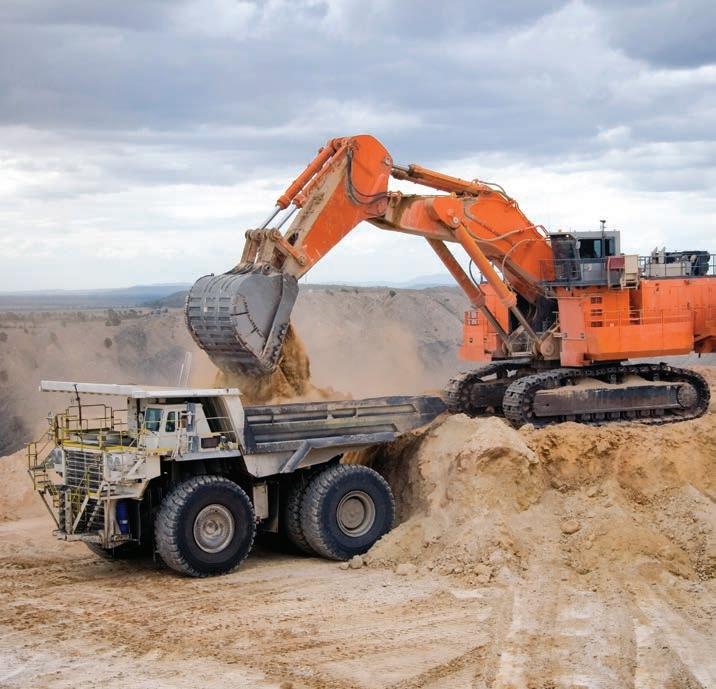
3 minute read
Condition critical: How criticality lists can help prevent unplanned shutdowns
CONDITION CRITICAL
How criticality lists can help prevent unplanned shutdowns
By Gord Susinski
Preventing unexpected shutdowns is a priority for any mining organization. By being proactive and using criticality lists, there is an opportunity to reduce the frequency of unplanned downtime. But when shutdowns do occur, there needs to be a root cause failure analysis investigation into why.
Often the first priority is to get the machinery back up and running as quickly as possible, replacing the failed component and reducing downtime. This approach seems the most sensible in the short term, but to ensure the problem does not happen again, there needs to be a root cause analysis. Which component failed? Why did it fail? Could it have been prevented? These questions all need to be asked and answered, as soon as possible.
Criticality lists
Prevention is much better than a cure. The most expensive failures are those that happen without notice, but proactive maintenance can help mitigate against this.
It can be difficult to proactively analyze and maintain all equipment; therefore, a criticality list is crucial. This works by breaking down each machine or piece of equipment into a category of importance. The simplest criticality lists have four brackets.
The first bracket is absolutely crucial, if this component breaks, the entire operation stops. A good example is a feed conveyor in a mining site. If this fails, it can cause the entire operation to shut down.
The second category is slightly less crucial but if this equipment stops working it will be expensive to repair and replace and may impact production. The third and fourth brackets are not as crucial and you can likely still run without them or they are redundant.
Proactive maintenance should place a higher priority on the first two brackets, finding those critical pieces of equipment and ensuring they are well monitored and maintained. For instance, a crucial $5,000 bearing can easily result in $5 million of lost income if not maintained correctly. Therefore, this equipment needs to be monitored and proactively maintained. To ensure these components are looked after, those managing them should seek technical support, whether that is the original equipment manufacturer (OEM), the lubricant manufacturer or the filter supplier, if so equipped.
A comprehensive proactive maintenance program can prevent unplanned downtime and maintenance stops. When a heavy-duty lubricant is used alongside a used oil analysis program in a comprehensive maintenance plan, managers can be confident that their proactive approach is helping them run an efficient site.
Used oil analysis
Conducting a used oil analysis program over time and at regular intervals allows experts to map trends effectively, which will identify fluctuations in results so mechanical problems can be isolated and fixed quickly at a relatively low cost.
Undertaking used oil analysis should always be supported by recommendations from the equipment’s Original Equipment Manufacturer (OEM), as well as advice from technical experts – particularly if you are considering extending drain intervals. Any deviations from the OEM recommendations could void a warranty and result in expensive repair costs.
A proactive maintenance program will not only help to keep the equipment reliable, but also keep equipment working longer between maintenance periods, making it a cost-effective solution for ensuring components run at peak performance. Individual pieces of equipment are always vulnerable to wear and tear, but if maintenance issues are ignored, they could lead to a catastrophic failure that requires larger and more expensive repairs.
Learning from failures
When failures happen, there is an opportunity to learn from them and use that knowledge to attempt to prevent similar failures in the future. Where possible, you should involve your suppliers. The technical service teams will have vast experience and most likely will have encountered the problem before. They can advise on what has gone wrong and the measures that need to be put in place to prevent it.
Training is also crucial. As the adage goes, you don’t know what you don’t know. Suppliers like Petro-Canada Lubricants’ technical services team are always willing to help and share information. The team has vast expertise and experience in the mining industry and conducts technical training and education on a variety of topics – from the fundamentals of lubricants to specific equipment questions, and often can solve problems through the experience of the team.
Prevention is always the goal. However, every issue can’t always be anticipated, so when shutdowns occur, it’s vital to ensure you learn from them. CMJ
– Gord Susinski is Senior Technical Service Advisor, Petro-Canada Lubricants. Gord provides technical services expertise for Petro-Canada Lubricants mining customers across Canada and has more than 30 years of experience in the industry.




